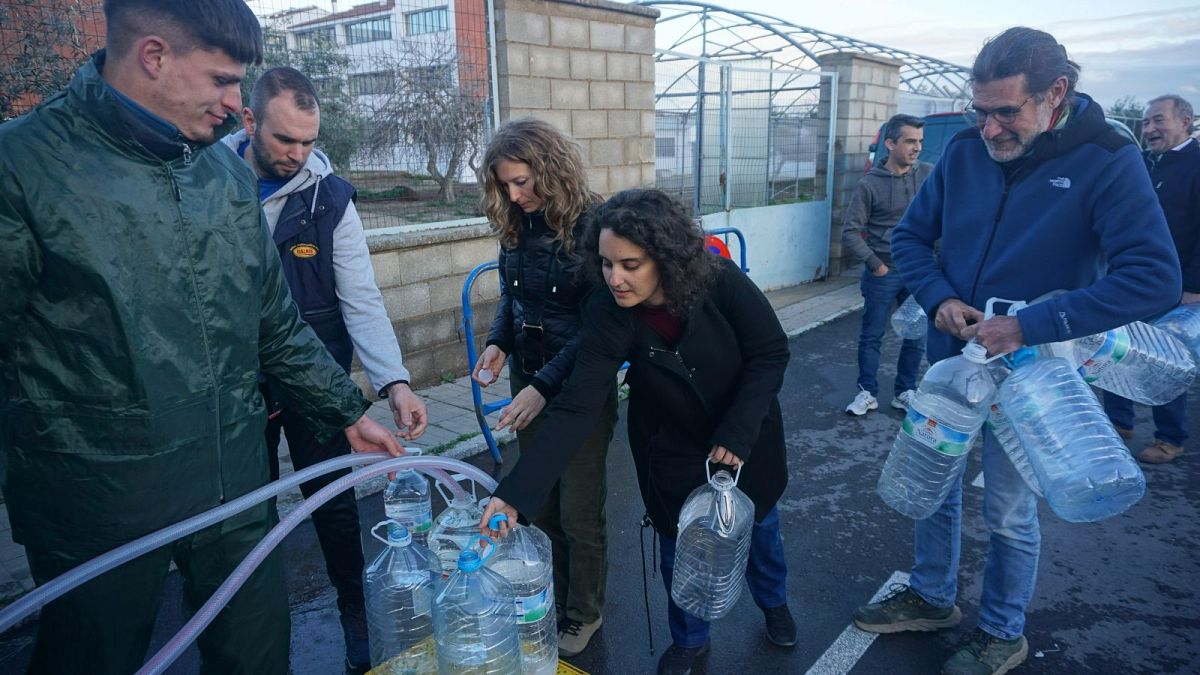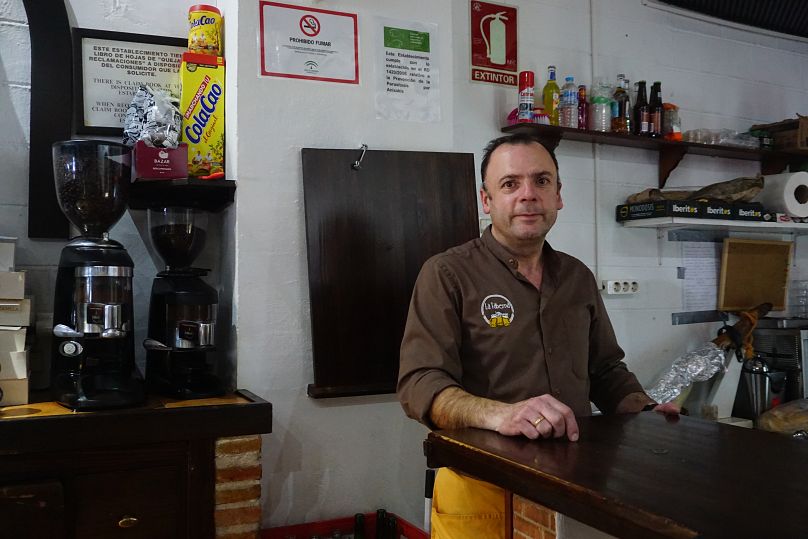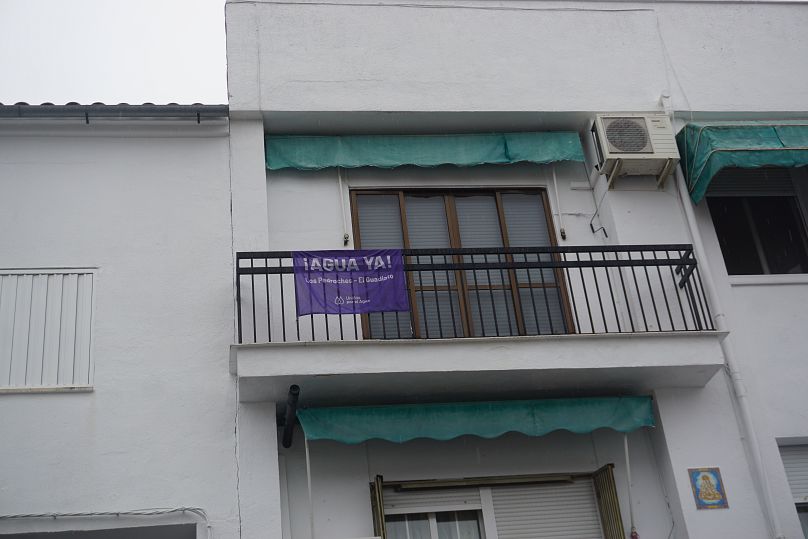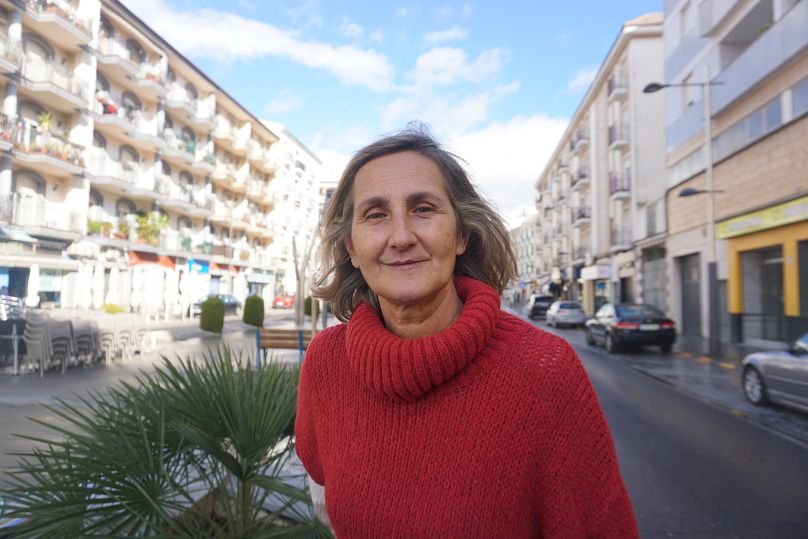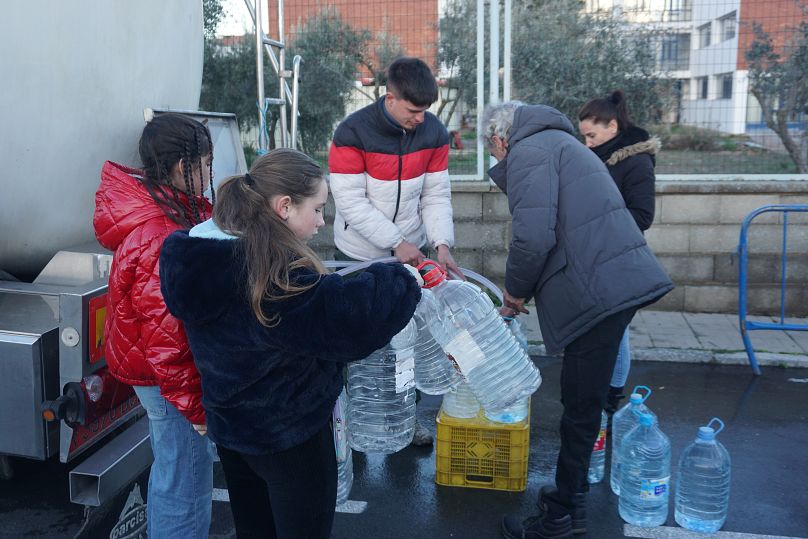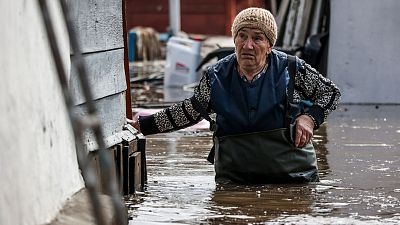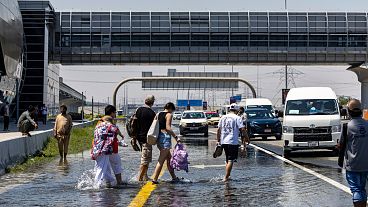Andalucía residents are afraid to wash their children with the tap water, and say even dogs refuse to drink it.
It is an exceptionally rainy day in the small town of Pozoblanco, 70 kilometres north of Córdoba city in Andalucía. But 50 centimetres of rain in one February weekend is still a drop in the ocean of need.
Most of the residents gather around cisterns of water in the morning and after lunch. This is where the life of the Spanish town centres now.
Along Holanda Street, more and more cars pull up with dozens of empty plastic containers stuffed in their boots. The water tanker doesn’t come on Sundays so people need to stock up. If they don't, they can't brush their teeth or even cook dinner.
The lack of drinking water is not a new problem. Residents have been living like this since 17 April 2023, when Andalucía’s government declared the tap water unfit for human consumption.
Andalucía's los Pedroches and el Guadiato regions are not the only parts of Spain impacted by drought. Last month Catalonia declared a drought emergency, imposing water restrictions that affect around six million people in Barcelona and hundreds of surrounding towns.
These are just some of the consequences of three years of below-average rainfall and record-high temperatures driven by climate change in Spain.
People fear the tap water is making them ill
People entering La Taberna restaurant in Pozoblanco like to joke: "Let's have a beer rather than water, it is better." But when they start talking and the topic turns to water, you can hear the frustration growing.
"We have a saying: 'reir para no llorar', meaning ‘to laugh so as not to cry,’ África Villén, a resident who runs her own photography and video production business, tells Euronews Green.
As we wait in line for water from the tanker, África produces a video of a 5-month-old boy, covered in red pimples. “His mum sent it to me, she says it is from our tap water. But we have no evidence,” she says.
Many residents of Pozoblanco also complain of dry hair or skin problems. They believe this is the result of bathing in polluted water.
“We give our dogs the water we have in the tap because it is supposedly okay to give to animals,” adds another resident, María.
“Later, we noticed that our dogs prefer to drink the dirty rainwater from an old pan we have in the yard than the [water] we have in the tap.”
Residents are sharing their waterless lives on social media
Last month, África posted a video on Instagram showing what it is like to live without drinking water in the 21st century in the middle of Europe.
In her flat filled with water containers, the 33-year-old describes how she prepares tea and dinner, and brushes her teeth - tasks that have become a daily challenge without a regular supply of drinking water.
The video captured people’s attention, receiving more than 130,000 views in just five days.
Another Instagram video filmed in several schools in the Córdoba region just before Christmas caused an uproar. It shows pupils reading out their letters to the Three Kings (traditionally the ones who bring the presents in Spain).
One child pleads, “Dear Three Kings, this year I don't want a scooter or a new phone [...] I want to turn on the tap water and have clean water, I want to take a shower and for my skin not to itch, we want to drink water from the fountain at our school.”
Soon after the video was shared, inspections were carried out at the schools whose students featured in the video. Pozoblanco residents described it as “an attempt at censorship.”
The drought-hit regions that Spain forgot
África wanted to document the life of the 80,000 inhabitants of Andalucía's los Pedroches and el Guadiato regions, who often feel sidelined by national media. Both regions cover more than 5,000 square kilometres but are inhabited by relatively few people.
"We are in the north of the province of Córdoba. Note that there is a motorway to the south and also from east to west; in our north there is none. A small population for politicians means few votes and therefore a lack of interest and will to act,” says África.
“If there was a shortage of drinking water in Madrid or Seville the authorities would solve the problem in a few days or weeks, but our region doesn't interest them. Most of the people here live from agriculture and farming. It is Mordor because there is not even a connection to Madrid from here,” she adds.
África recalls that when drinking water ran out in the Córdoba city area, the situation was resolved within two weeks. “We are getting used to this situation, and we shouldn't. We pay normal bills for water that we don't have in the tap. It's unreasonable,” María Cabrera, a seamstress from Pozoblanco, says.
“They wanted to increase our water price by 22 per cent for water that we don't have. In the end, they raised the prices in the Córdoba province, excluding our regions that don't have potable water,” adds África.
Why are residents in Andalucía putting up purple flags?
Some balconies in Pozoblanco display purple flags with a drop of water and the caption 'Agua ya', meaning 'water already'. María and her partner Miguel Aparicio belong to the civil society group 'Unidos por el agua en Los Pedroches y El Guadiato', which fights for potable water in the regions.
“We want to talk to authorities at all levels who have influence over water. We are not interested in party affiliation. We have sent invitations and petitions to all parties,” says spokeswoman Elena Vargas González.
The platform regularly organises protests and marches, including to the Sierra Boyera reservoir, which dried up completely last spring. It used to supply drinking water to 80,000 inhabitants in 27 municipalities in the north of the province of Córdoba.
Now the water treated at Sierra Boyera comes from the La Colada reservoir and is of such poor quality that it is not yet drinkable. The government of Andalucía ordered a ban on human consumption of this water, after finding high values of organic carbon in the liquid.
It continues to flow from the tap but is only used for cleaning, industrial and irrigation purposes.
Workers are transporting water
José runs La Taberna on the main avenue in the town of Pozoblanco. The place was set up just over a year ago, but within six months the water in the tap became undrinkable.
This means that José is now not only the owner, cook and waiter, but is also responsible for bringing water to the premises. "We need about 12 litres of water every day to cook, wash tomatoes, lettuce or prepare coffee. We had to adapt our coffee machine so it doesn't take the water we have in the tap," he says.
Restaurants, cafés and care homes for the elderly have had to adapt to the new reality of no drinking water. In most of these places, staff are assigned to transport drinking water from the cistern. Teachers are asking students to come to school with a bottle of water and have to supervise them to make sure they don’t drink from the taps.
Charo Blanco, a 56-year-old nurse, says that the local hospital she works at has drinking water supplies and does not depend on drinking water from a cistern.
But she says the most difficult situation is for elderly people.
“People suffer from memory loss or Alzheimer's; we tell them not to drink tap water, but they forget anyway. When it happens once or twice they're probably fine, but in the long term we don't know what can happen to them,” Charo says.
What is the solution to Andalucía’s water woes?
Researchers from the University of Córdoba say it is not just the drought that has caused the difficult situation in Pozoblanco and the surrounding towns. Development and an increase in cattle farming has also led to increased water consumption.
The local authorities have put forward a solution to the problem, which they say should return drinking water to people’s taps by March.
The €15 million project involves work at the Drinking Water Treatment Station of the Sierra Boyera reservoir and the construction of a connection between the Sierra Boyera reservoir and el Puente Nuevo.
Representatives from 'Unidos por el Agua' platform are critical of this proposal, however, as they say it must be coupled with the decontamination of the water pipes.
“The solutions proposed by the authorities are temporary. Our reservoir has indeed dried up. But other areas of Spain are also struggling with drought. We have water reserves for almost three years, but this water is contaminated. We need investment in water treatment plants,” Elena says.
“Mixing dirty and clean water. What kind of solution is this? It's not a solution,” says África. “As a citizen, I feel abandoned. It's like they want us to move out of here.”
It is unclear how long the water tankers will continue to come to Pozoblanco and the other municipalities deprived of drinking water. Residents fear that when the authorities put their solution in place, they will stop providing them.
80,000 residents may then be condemned to only buying water from the supermarket for fear of tap water - but people are not planning on letting it get to that point.
In 2000, when there was an attempt to build a radioactive waste storage area in Pozoblanco, locals took to the street. Thanks to their action, these plans were stopped. People are now hoping that their persistence will finally see the return of their clean drinking water.
“People who don't live here don't understand this. What it is like to shower in faecal water for almost a year, to bathe their children in it, to give it to their pets to drink. We don't want just any water, we want good quality water,” Elena says.
